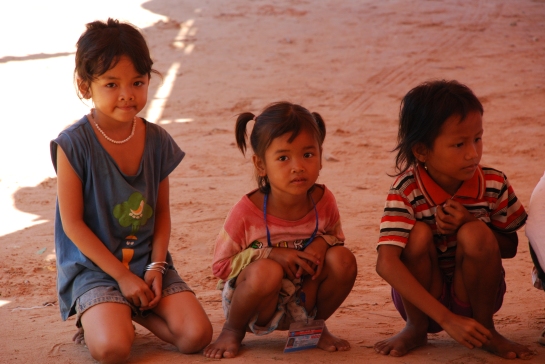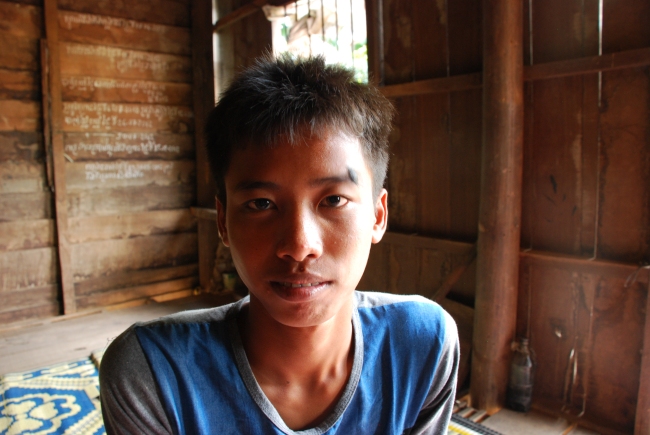
Pol Pot traded in his comfortable French education for a radical repudiation of all critical thinking. He wasn’t against literacy – but he demanded a certain type.
I think in a year of blogs about Savong’s School in Cambodia I’ve referred to the Pol Pot years only sparingly. I refer only cautiously to those years because we are at risk of focusing on the Khmer Rouge as if this was the single shaper of today’s Cambodia. Just as surely today’s culture has been influenced by more than 1000 years of history, and by the French Colonial rule, and by the years immediately after Pol Pot when Cambodia lay adrift, deliberately rejected by the western world, during years of crippling poverty.
But today I thought I’d reflect on education during the Pol Pot years in order to fill a gap in my own understanding. One of the most destructive aspects of the Khmer Rouge, in their effort to disassemble Cambodia, was to attack three pillars of their society: religion, family and education. Sources reveal how they implemented many illogical laws to terrorise the population. You could be arrested for averting your eyes to the left rather than right. If you wore glasses, a sure sign of being a member of the bourgeois intelligentsia, you could also expect to be arrested and executed. Teachers were routinely rounded up, often in front of their students who later reported hearing rifle shots in nearby fields. Their beloved teachers never returned.
For teaching life before 1975 Mitty Steele’s excellent and deeply personal essay is an excellent place to start as she retraces her own father’s history.

In the Shadow of Angkor: Contemporary Writing from Cambodia Paperback by Frank Stewart (Editor), Sharon May. A compelling account of the survival of literature in Cambodia during and after the Pol Pot years.
In the book above, In the Shadow of Angkor: Contemporary Writing from Cambodia the contributing writers provide not only tastes of modern essays and poetry, but also the recollections from those who recount the elimination of the educated “elite” during the time of Pol Pot. Many writers survived by feigning illiteracy. Even so, by some estimates fewer than 60 academics are said to have avoided execution or death through starvation. Sixty.
What is important to understand is that the Khmer Rouge did not wish to destroy literacy: but they wanted their kind of literacy. By that, say authors George Chigas and Dmitri Mosyakov in their study: Literacy and Education under the Khmer Rouge (written as part of the The Cambodian Genocide Program, Yale University,) the Khmer Rouge wanted an education system that was strong on unquestioning literacy: the blind acceptance of propaganda without critical doubt. For this reason there were people classed as “correctly literate” (for example peasants who could scarcely read – and who accepted what they read,) and those that were “incorrectly literate.”) This latter class were seen as a threat to the revolution and the emergence of the new Kampuchea. So they started eliminating those with a traditional French-style education (most schools in Cambodia still reflect the educational template of the French,) and those who spoke foreign languages such as French. (Today some of the older generation are still fluent in French – though they would have hidden this in the late 1970s.)
A quoted goal from the Grand Plan, put together in 1976 by Pol Pot and eight other leaders stated:
Continue the struggle to abolish, uproot, and disperse the cultural, literary, and artistic remnants of the imperialists, colonialists, and all of the other oppressor classes. This will be implemented strongly, deeply and continuously one after the other from 1977 onwards.
The educational policy of the Khmer Rouge was also very strong on “technical skills” namely the skills required to grow rice, to fish, to farm, as well as to share simple medical knowledge. The goals were not about personal advancement but, rather, the advancement of the collective. The new school system was designed to “teach” not only through classroom activities but through physical labour. As the plan said:
Daily Education Methods. Half study, half work for material production
The Yale authors research shows how Individualism was seen as a threat to the Party’s ideology. In the same section of the document that calls for dividing the day between study and work, they found this statement:
“In our educational system there are no examinations and no certificates; it is a system of learning through the collective and in the concrete movement of the socialist revolution and the building of socialism in the specific contexts, especially the co-operatives, factories, and military units.”
The general school syllabus – at least that proposed for 1977 – included:
- reading and writing
- arithmetic
- geography (importantly that of the nation)
- history of the revolutionary struggle of the people, the revolutionary struggle for the nation, the revolutionary struggle for democracy, the revolutionary struggle for socialist revolution, and the struggle to build socialism.
- natural sciences, physics, chemistry (as base)
- the Party’s politics, consciousness, and organisation
That was the stated goal anyhow. In reality the school system was collapsing and the much vaunted revolution ended up an economic disaster. Grand plans, modeled on Chinese efforts under Mao and dubbed The Super Leap Forward failed miserably. The lofty objectives for rice production per hectare and for a bounteous agricultural production to be shared by all were never even approached. Very soon the nation was cast into famine conditions and the dream to build a new school system never advanced past the opening of a handful of model schools, if that.
What I find amazing is how, through all this, the DNA of the educational system even survived. The collective memory of the education system, as it existed prior to Pol Pot remained loosely intact due I think to three things. One was the capacity of educated people to feign illiteracy and to simply survive by staying quiet and compliant. Next was the escape of Cambodians, mostly to Thailand before locating – mostly to France and the USA – in the aftermath of Pol Pot. Within the Paris and Long Beach communities existed survivors who later helped resurrect the fragments of the education system. And finally the re-emergence of an education system came from the people themselves – people who had been through school as children. People who knew the value of what they’d lost.
I don’t think of the Pol Pot years without ultimately thinking of the courage of those who faced the terror. Today’s education system in Cambodia is developing again. We now have a cohort of teachers who have had teacher training. There are Khmer text books and universities. I think of today’s system as not only preserving the DNA from earlier times, but also being a system fueled by a deeper thirst for education, and a system laced with resilience and courage.
For more history of Cambodia.
For more facts and figures about present day Education in Cambodia








You must be logged in to post a comment.